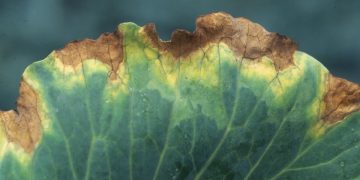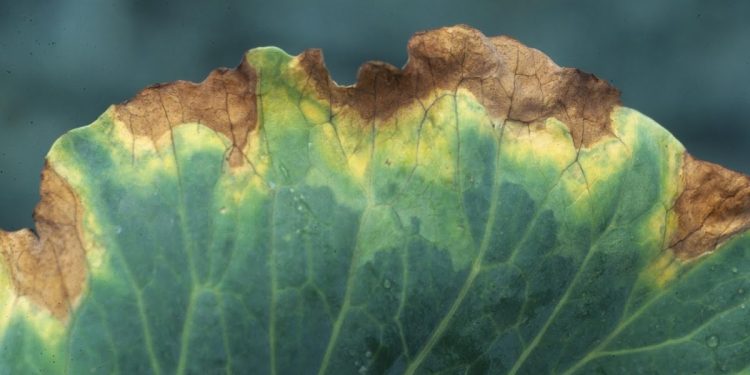#SavingCrucifers #BlackRotDisease #XanthomonasCampestris #DiseasePrevention #CropRotation #DiseaseResistantVarieties #Sanitation
Crucifers, also known as Brassicaceae, are a family of vegetables that include broccoli, cauliflower, cabbage, and kale, among others. Unfortunately, this family of vegetables is susceptible to a disease called black rot, caused by the bacterium Xanthomonas campestris. Black rot can devastate entire crops, causing significant economic losses for farmers and reducing the availability of healthy food options for consumers. In this article, we will explore the causes and consequences of black rot disease and discuss strategies for preventing its spread.
Black rot disease is caused by Xanthomonas campestris, a bacterium that can survive in soil and plant debris for several years. The bacterium enters the plant through wounds or natural openings, such as stomata, and begins to colonize the tissue. Symptoms of black rot include yellowing of leaves, V-shaped lesions on leaves, and dark streaks on the stems. As the disease progresses, the infected tissue becomes soft and mushy, and the plant may eventually die.
Black rot can spread rapidly through a crop, particularly under warm, humid conditions. The disease can be spread by wind, water, or infected plant debris, making it difficult to control once it has established. Preventative measures are crucial for managing black rot disease. Crop rotation, planting disease-resistant varieties, and avoiding overhead irrigation can all help to reduce the risk of infection. Additionally, farmers should practice good sanitation by removing and destroying infected plant material and disinfecting tools and equipment between uses.
If black rot disease is left unchecked, it can have serious consequences for both farmers and consumers. Farmers may experience significant losses in yield and quality, while consumers may face higher prices and reduced availability of cruciferous vegetables. Additionally, the use of pesticides to control the disease can have negative environmental impacts, making prevention the best course of action.
Black rot disease caused by Xanthomonas campestris is a significant threat to cruciferous vegetables. However, with proper preventative measures, such as crop rotation, disease-resistant varieties, and good sanitation practices, farmers can reduce the risk of infection and protect their crops. By taking action to prevent black rot disease, we can ensure the availability of healthy, affordable cruciferous vegetables for years to come.































